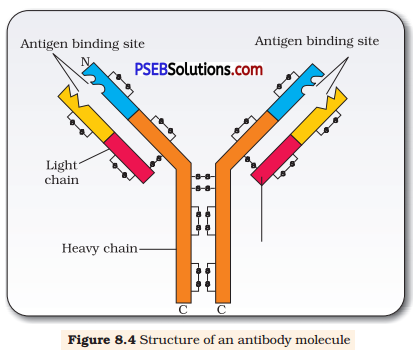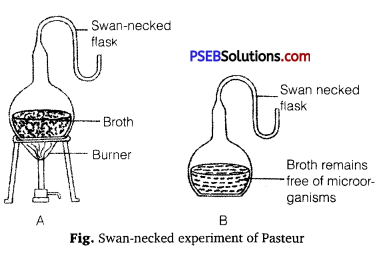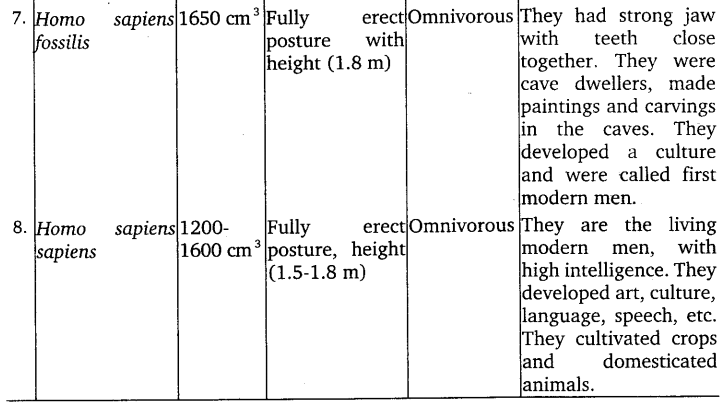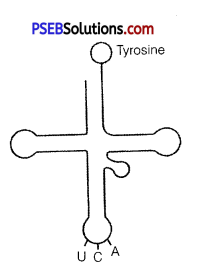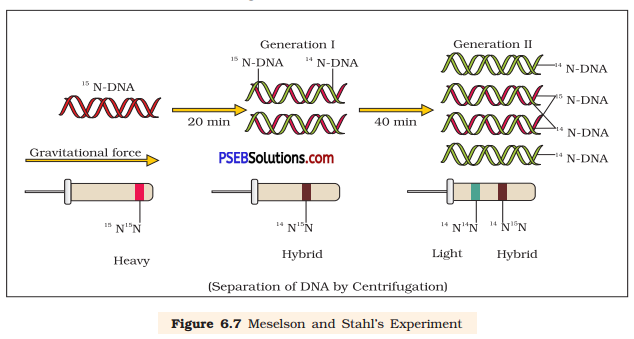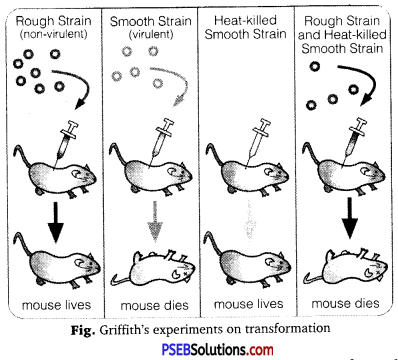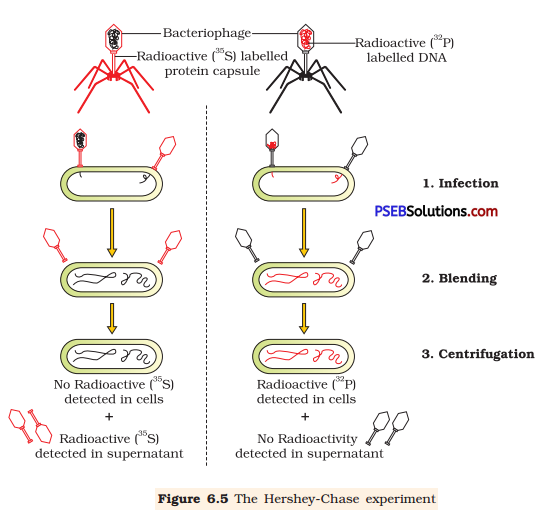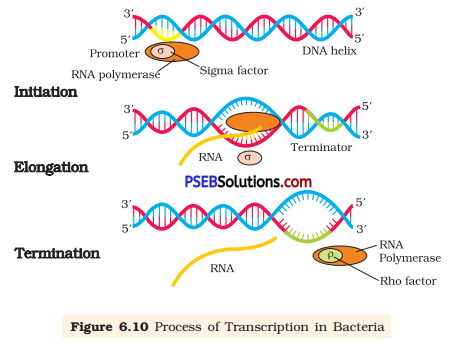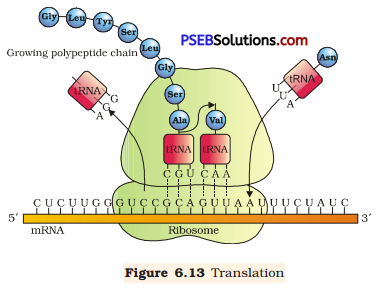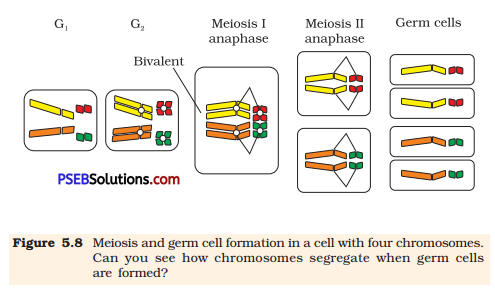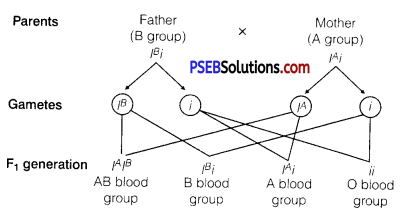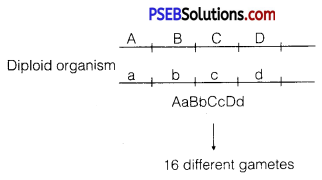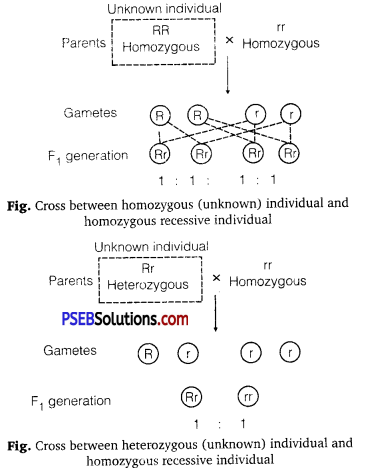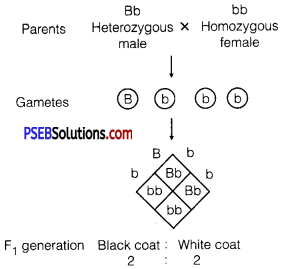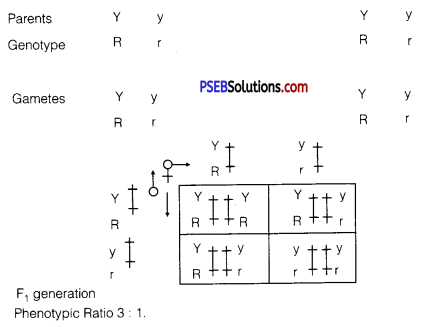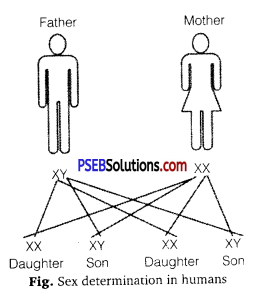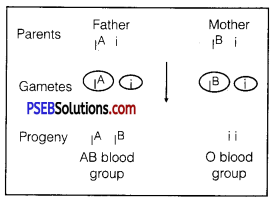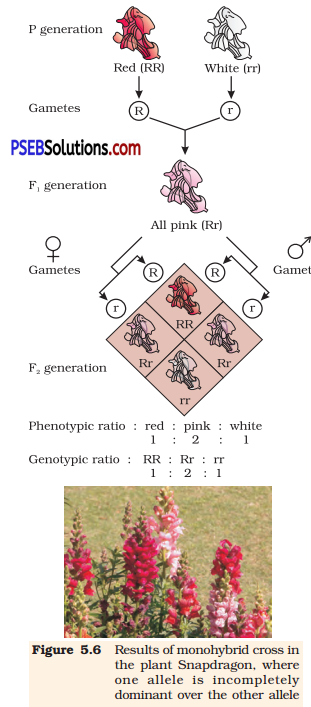Punjab State Board PSEB 12th Class Biology Important Questions Chapter 9 Strategies for Enhancement in Food Production Important Questions and Answers.
PSEB 12th Class Biology Important Questions Chapter 9 Strategies for Enhancement in Food Production
Very short answer type questions
Question 1.
Suggest the breeding method most suitable for animals1 that are below average in milk productivity.
Answer:
Outcrossing.
Question 2.
How is a mule produced?
Answer:
The mule is produced by breeding between male donkey and female horse (mare).
Question 3.
Write the name of the following:
(a) The most common species of bees suitable for apiculture.
(b) An improved breed of chicken.
Answer:
(a) Apis indica/Apis mellifera/Apis dorsata
(b) Leghorn/Rhode island red/Minorcha.
![]()
Question 4.
List any two economically important products for humans obtained from Apis indica.
Answer:
Honey and beeswax.
Question 5.
Which of the following is the semi-dwarf wheat that is high yielding and disease resistant?
Pusa Shubhra, Kalyan Sona, Ratna
Answer:
Kalyan Sona.
Question 6.
Write the names of two semi-dwarf and high yielding rice varieties developed in India after 1966.
Answer:
Jaya, Ratna.
Question 7.
Why is the South Indian sugarcane preferred by agriculturalists?
Answer:
South Indian sugarcane has thicker stem and higher sugar content.
![]()
Question 8.
Name any two diseases the ‘Himgiri’ variety of wheat is resistant to.
Answer:
Leaf and stripe rust; Hill bunt.
Question 9.
What is meant by ‘hidden hunger’? [NCERT Exemplar]
Answer:
Consumption of food deficient in nutrients particularly, micronutrients, proteins and vitamins is called hidden hunger.
Question 10.
What is protoplast fusion? [NCERT Exemplar]
Answer:
The merging of protoplasts obtained from two different cells to form a hybrid protoplast is called protoplast fusion.
Question 11.
What is the economic value of Spirulina?
Answer:
Spirulina can .serve as food rich in proteins, minerals, vitamins, fats and’ carbohydrates.
Question 12.
Identify two correct statements from the following:
(i) Apiculture means apical meristem culture.
(ii) Spinach is iron-enriched.
(iii) Green revolution has resulted in improved pulse-yield.
(iv) Aphids cannot infect rapeseed mustard.
Answer:
(ii) and
(iv) are correct.
![]()
Short answer type questions
Question 1.
(a) Name any two fowls other than chicken reared in a poultry farm.
(b) Enlist four important components of poultry farm management.
Answer:
(a) Pigeon, Turkey, Duck, Geese (any two)
(b) Poultry farm management includes :
- Proper feed and water
- Hygiene and health care of birds
- Proper and safe farm conditions
- Selection of disease free and suitable breeds.
Question 2.
In animal husbandry, if two closely related animals are mated for a few generations, it results in loss of fertility and vigour. Why is this so? [NCERT Exemplar]
Answer:
The phenomenon being referred to is called ‘inbreeding depression’ and results in loss of fertility and vigour. This happens because the recessive alleles tend to get together and express harmful effects in the progeny.
Question 3.
Give the scientific name of the most common species of honey bee reared in India. Why is it advantageous to keep beehives in crop-fields during flowering periods?
Or Honey collection improves when beehives are kept in crop- fields during the flowering season. Explain.
Answer:
The most common species of honey bee reared in India is Apis indica. Honeybees are good pollinators of almost all the plants. The flowers in turn offer floral rewards like nectar and pollen grains. So, when beehives are kept in crop-fields during the flowering season, honey collection increases and in turn the yield also increases.
Question 4.
How has mutation breeding helped in improving the production of mung bean crop?
Answer:
Mutation breeding produced disease resistant varieties against yellow mosaic virus and powdery mildew.
(a) Write the desirable characters a farmer looks for in his sugarcane crop.
How did plant breeding techniques help north Indian farmers to develop cane with desired characters?
(a) The desirable characters that should be present in sugarcane crop are as follows :
- High yield
- Thick stem
- High sugar content
- Ability to grow in North India.
(b) With the help of plant breeding, the two varieties of sugarcane t.e. Saccharum barberi [sugarcane of North India] and Saccharum officinarum [sugarcane of South India] were crossed to obtain sugarcane varieties having desirable, qualities. So that a good quality sugarcane variety could be grown in North India.
![]()
Question 6.
Differentiate between somaclones and somatic hybrids. Give one example of each.
Answer:
Somaclones are the genetically similar plants, similar to the original parent plant from which explant was taken, to start the tissue culture. Somatic hybrids are the structures produced by the process of fusing protoplasts of somatic cells derived from two different varieties/species of plants on suitable culture/nutrients medium under aseptic conditions.
Question 7.
Why is it necessary to emasculate a bisexual flower in a plant breeding programme? Mention the condition under which emasculation is not necessary.
Answer:
Emasculation is necessary to ensure that only the desired pollen grains are used for pollination and the stigma is protected from contamination (from unwanted self pollen). The anthers are removed followed by bagging so the plant now behaves as a female plant. The pollen grains from the anthers of the desired male plant can be dusted on the stigma of flower of the female plant to obtain desired results.
Emasculation is not required if the plant produces unisexual flowers.
Question 8.
How does culturing Spirulina solve the food problems of the growing human population?
Or Large scale cultivation of spirullina is highly advantageous for human population. Explain giving two reasons.
Answer:
Spirulina can be grown easily on materials like waste water from potato processing plants, straw, molasses, animal manure and even sewage, to produce large quantities of biomass. It serves as a food rich in protein, minerals, fats, carbohydrate and vitamins, being environment friendly.
Long answer type questions
Question 1.
Enlist the steps involved in inbreeding of cattle. Suggest two disadvantages of this practice.
Answer:
Inbreeding: involves the mating between closely related animals of same breed for 4-6 generations.
The breeding strategy in inbreeding includes following steps:
- Identification of the superior males and superior females of the same breed followed by mating.
- Progeny obtained is evaluated and superior males and females among them are identified for further mating, e.g., in case of cattle, a superior female is a cow or buffalo that produces more milk per lactation and the superior male is the bull which gives rise to superior progeny as compared to other males.
- Inbreeding increases homozygosity, which is necessary to evolve a pure line in any animal.
- Inbreeding exposes harmful recessive genes that are eliminated by selection.
- It helps in accumulation of superior genes and elimination of less desirable genes.
Disadvantages: Continued inbreeding causes inbreeding depression, reduced fertility and low productivity.
![]()
Question 2.
A sugarcane has been affected by virus. How can a virus-free cane be developed from it? Explain the procedure.
Answer:
Tissue culture method has application in production of healthy plants from the virus infected sugarcane plants by using meristems (apical and axillary buds) as explants which are free from virus.
Meristem Culture: It is in vitro culture of meristem containing regions being present over the shoot apex and very young buds over the nodes. With the help of fine scalpel shoot tip of 0.1-1.0 mm length is removed. Alternatively, sections of 3rd and 4th nodes from stem apex are removed. They are 1-2 cm long. Their leaves are detached from the tips of petioles. The sections are surface sterilised in 0.5% sodium hypochlorite for ten minutes, rinsed in sterile distilled water and thinly paired to develop fresh surface. They are placed over solid culture medium having cytokinin (generally BAP). Cytokinin is known to overcome apical dominance and induce growth of axillary buds.
Each explant will develop either a number of shoots or a single shoot. It is known as multiple shoot or single shoot cultures respectively. The single shoot is again cut into nodal segments for further culturing. Ultimately shoots of 2-3 cm are exercised and transferred to medium promoting root formation (with extra auxin). The plantlets are then hardened and transferred to field.

